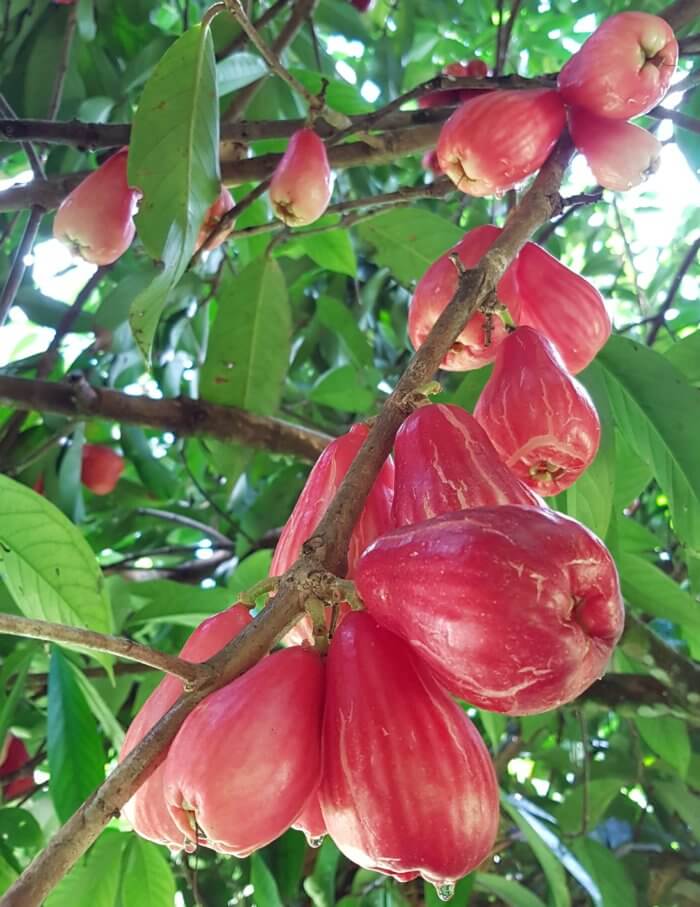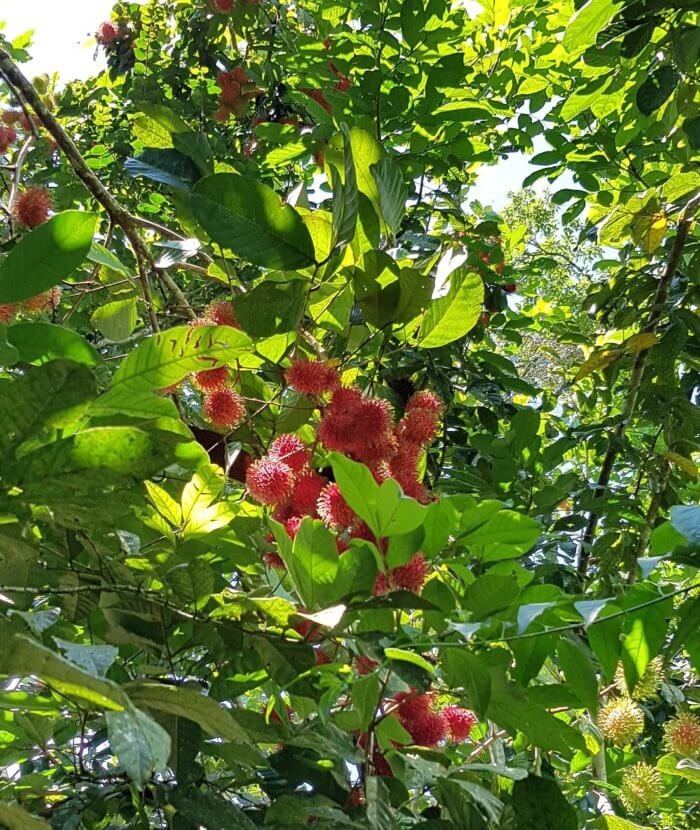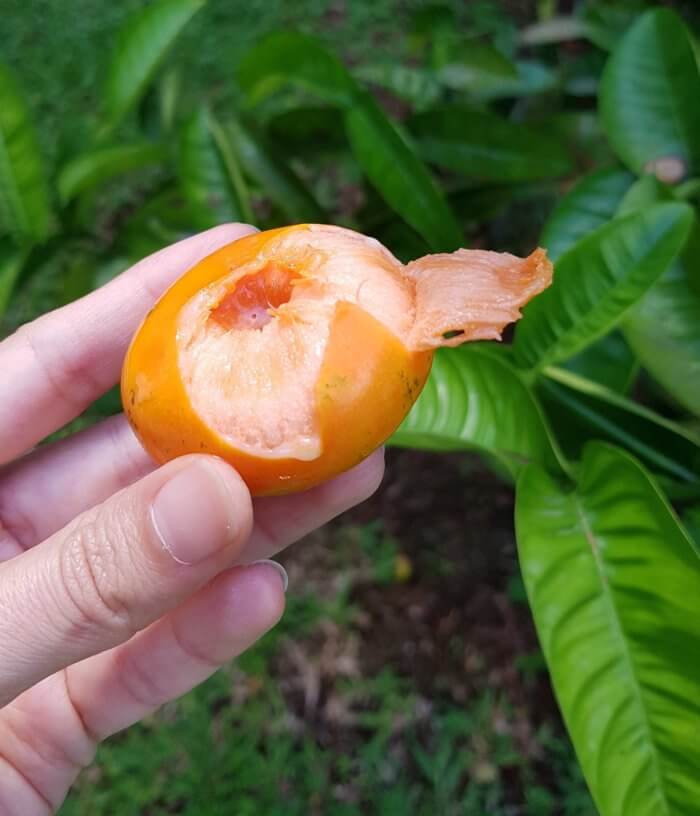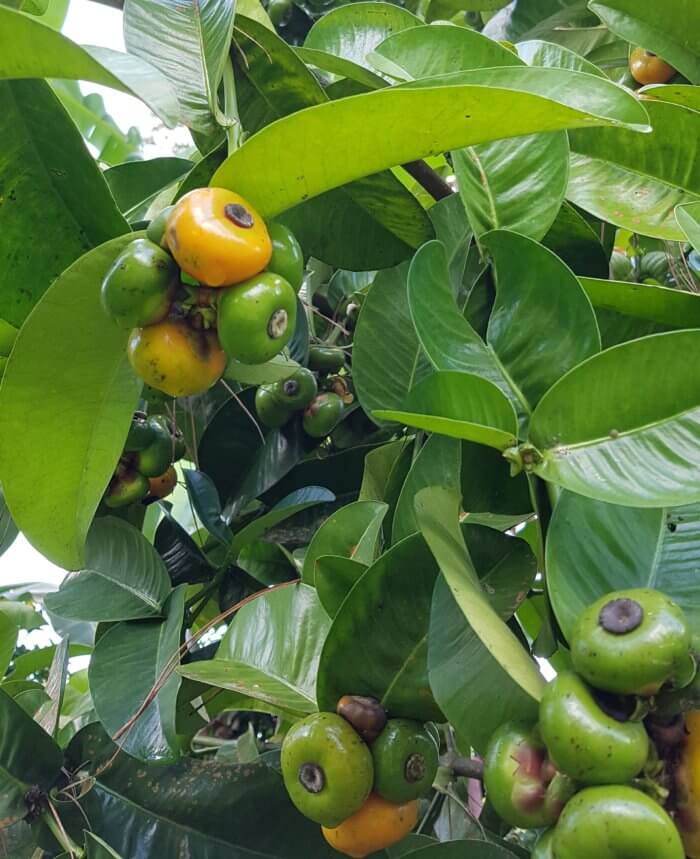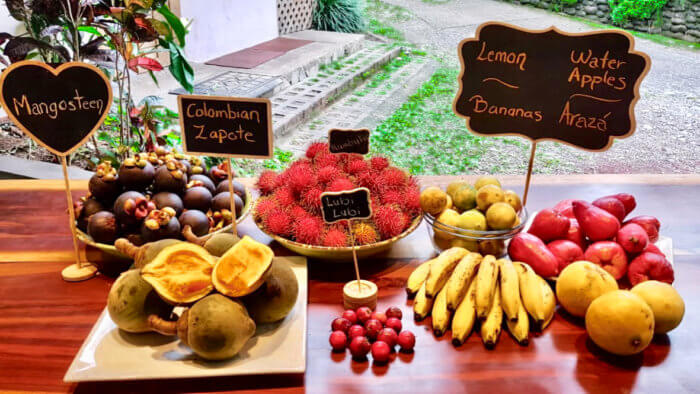The great English wordsmith D.H. Lawrence tells us that “Every fruit has its secret.” Come on a walk with us around Finca Luna Nueva in August to learn our garden’s exotic tropical secrets.
There’s the cocoplum tree, which we know as icaco, covered with what seems like thousands of round fruits the size of ping pong balls. The copious fruiting adorns every limb of the tree, and the soft rose-blush color beckons. The secret? The fruit has almost no flavor and has the consistency of a marshmallow! Taking a bite is like chewing slightly sweet and dry air. It’s true that the leaves have known medicinal properties, but no one rushes to eat the beautiful fruits. Except for me: I love this tropical marshmallow tree.
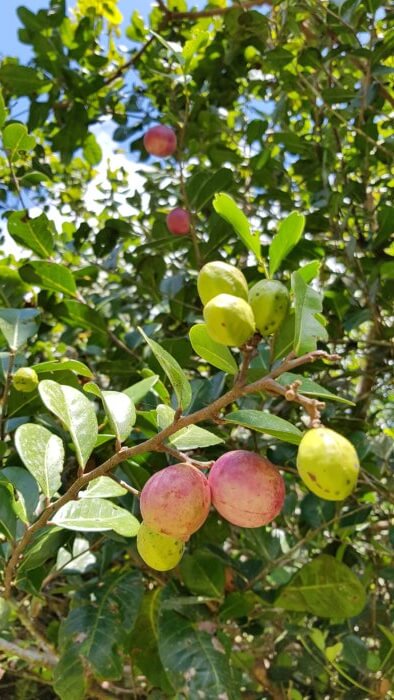
From the flavorless to a fruit many say is the most delicious fruit in the world: the mangosteen. Mangosteen is one of the gifts of the Garcinia family, and its devotees are, well, wildly devoted to eating it. Just what does it taste like? Maybe it’s the marriage of a perfect peach at the peak of ripeness and a perfect honeydew melon. Is there a hint of strawberry, perhaps? Or maybe that subtle sour is reminiscent of a cherry. You’ll just need to try them, and heed the words of a South Seas explorer in 1878 who said of mangosteen that it has “a taste which nobody can describe any more than he can tell how a canary sings or a violet smells.’’ The secret of this fruit is the utter indescribability of its perfect flavor. And they’re ripe right now! Our chef Bryan has just made some mangosteen ice cream – you better hurry down; it won’t last!
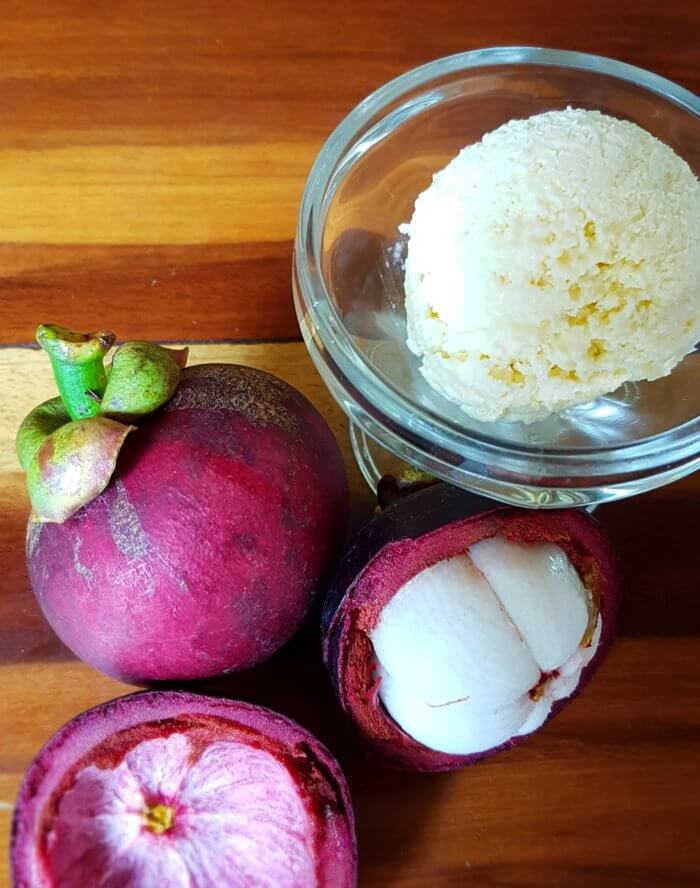
Next a fruit with a taste that everyone can describe and recognize: the jackfruit. A famous member of the Artocarpus family (think mulberry and breadfruit), a ripe jackfruit has flesh the color, smell, and taste of Wrigley’s Juicy Fruit gum. Rumor has it that Mr. Wrigley himself was inspired by the jackfruit to create that chewing gum, and if you love Juicy Fruit you’ll love jack. Jackfruit trees create the world’s largest fruit – up to 35 inches in length, 20 inches in diameter, and 120 pounds – and a mature tree offers up 100-200 of these behemoths per year. People use the unripe jackfruit as a vegetarian alternative to pulled pork, and restaurants around the world are finding creative ways to serve up this delicious fruit. We often serve jackfruit dishes at our restaurant, and one dish reveals the secret – hummus from jackfruit seeds, which is a specialty of the Luna Nueva restaurant. Check out this roasted unripe jackfruit dish that I just ate in Thailand – one slice was enough to feed a large table.
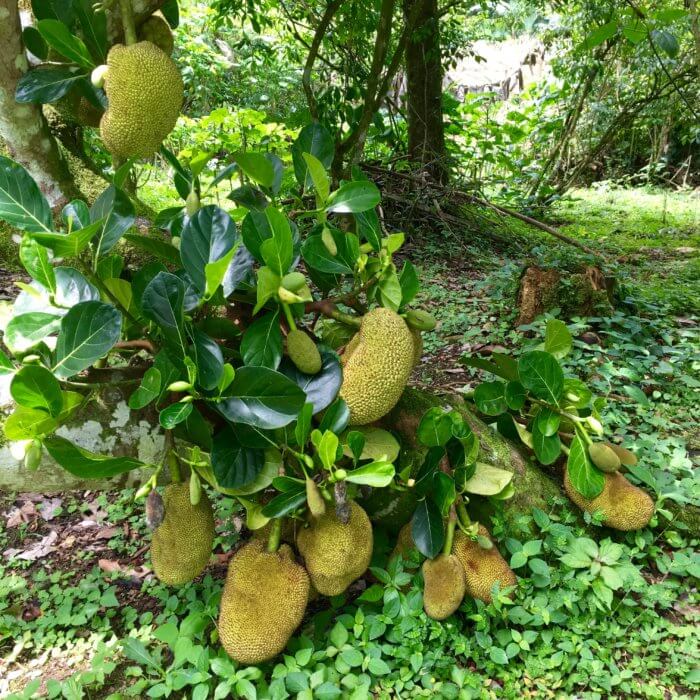

One slice fed the table!
A close relative to jackfruit is the infamous breadfruit, the fruit brought to the Caribbean by Captain Bligh of the Bounty. He was bringing breadfruit to the islands as food for the growing slave population, and many of you will remember that his crew mutinied, threw the breadfruit overboard, and put Bligh out to sea on a small boat with nothing but a watch, a sextant, and a small amount of food. He must have been quite the sailor, for he sailed over 3,000 miles to an island, got another large boat, went back to Tahiti, and this time successfully brought the fruit to the Caribbean. We are fans of the work of Paul Zink and Global Breadfruit, http://www.globalbreadfruit.com, and Paul brought us four prized breadfruit cultivars that produce grapefruit-sized fruits for approximately eight months of the year. Each tree can yield up to 200 fruits per year, and with a mix of cultivars you can enjoy breadfruit almost year round. Our restaurant is experimenting with this prolific fruit, and we feel that breadfruit trees should be included in the home gardens of everyone who lives in the tropics. What secret does breadfruit whisper? The message of hope, for with breadfruit in your garden your family should never face hunger.
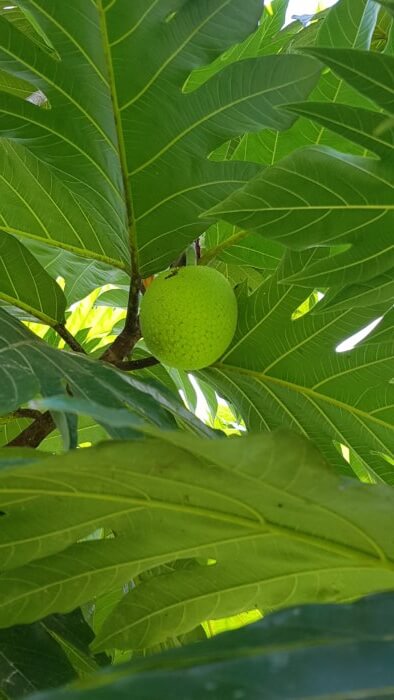
One fruit we don’t have at the farm is an apple, but we have something close – a water apple. Known at our farm and in parts of the world as wax jambu, this fruit is the opposite of icaco. Whereas icaco dries out your mouth, the water apple delivers a burst of slightly sweet, almost rose-flavored, liquid that pops in the mouth. The ripe fruit resembles a squat pear but has the crunchiness of an apple, and they are prolific fruiters. The secret of water apple is “eat me now! I won’t last long.” That goes for the water apple pie that Bryan just made at the restaurant!
You’ll never find a ripe yuplon at the farm: the unripe fruits are too attractive to humans and other animals. It looks like a very small avocado or huge olive, and in its unripe condition it tastes like a crunchy green olive that thinks it’s a pine cone. People enjoy the unripe fruit with salt, and I’m a big fan because, like wax jambu, it gives you a little bit of an apple experience. The secret is that these plants are not commonly cultivated anywhere in the world, but we have several small trees that are robust producers. We’ve discovered the joy of eating pine cone olives!

Call it “mispel” in the Virgin Islands, “zapote” in Honduras, “dilly” in the Bahamas, “chico” in the Philippines, “sapathilla” in Sri Lanka, “lamoot” in Thailand, or “ciku” in Malasia, but in Costa Rica we call is “nispero” or “sapodilla.” Nispero is a masterpiece of fruit, tasting like sweet, malty, caramel and melting in the mouth. The scientific name is Manikara zapota, which is a derivation of the Nahuatl name tzapotl. You need patience, as this fruit takes a long while to ripen, but once it’s ready you best be there as folks around here know and will be queued up for the taste treat. The secret of sapodilla is its texture, for while it melts in your mouth it has a pleasant granularity that augments the taste experience.
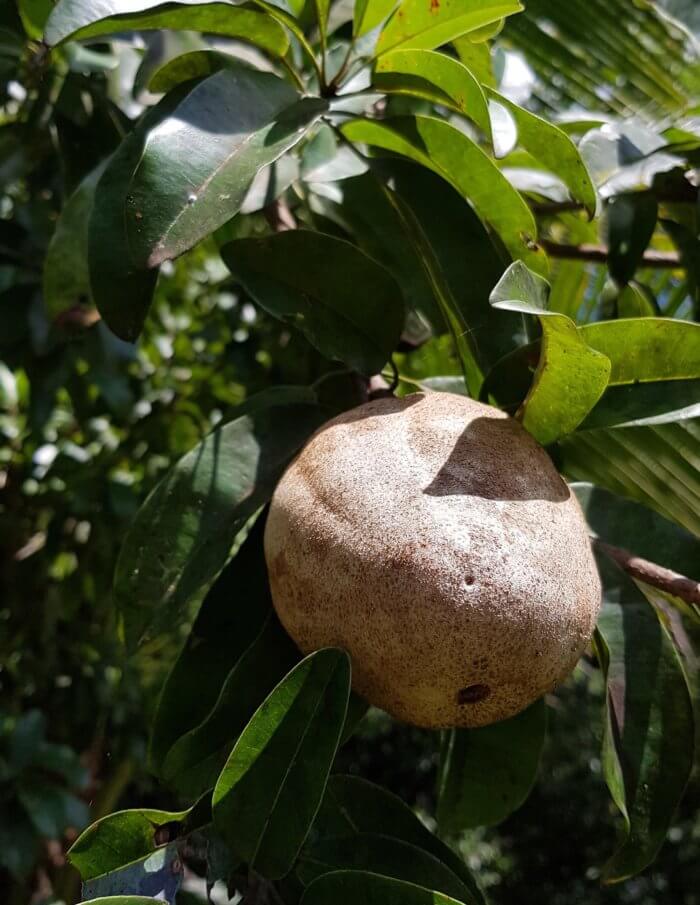
How about the opposite of delicious? How about a fruit that, when ripe, smells like stinky cheese in a boys’ locker room on a bad day? How about a fruit that launched a billion dollar nutraceutical industry based on science that we find unpersuasive? Yup, we’ve got it. Commonly known as “noni,” the fruit of Morinda citrifolia is related to coffee but be assured: no one is craving a cup of noni cappuccino. People buy noni juice by the billions (of dollars), there’s almost a cult following to those who swear by the claimed healing qualities of the fruit, and we remain unconvinced. One of the great ethnobotanists of Costa Rica, Luis Poveda, contends that the healing properties are only released if the fruit falls near or on a beach and interacts with a particular ant species. We’ll take the word of our esteemed amigo Poveda, as we don’t choose to partake. Brave souls at the farm can at least smell the fruit, and we’ve even had guests take a bite. We prefer to appreciate from a distance, although there’s a two-toed sloth family that has taken residence in the noni tree near reception so maybe sloths find some value in the leaves. The secret of noni is that it is laughing at humans for daring to eat such a disgusting fruit!
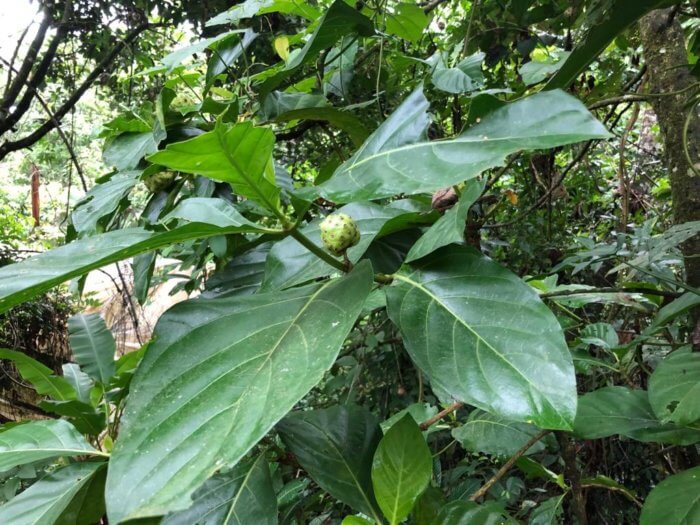
From the ridiculous to the sublime: rambutan! Known locally as Mamon Chino, which I think translates to the Big Chinese Suck, these trees are fruiting in gigantic quantities right now. We might harvest 20,000 pounds of rambutan this year, and we challenge our guests to eat as much as they possibly can. And that’s a fun challenge – this fruit is reminiscent in look and taste to lychee and our particular cultivar is one of the best. We thank Panfilo Taboa, formerly of EARTH University, for breeding our cultivar of rambutan. The fruit is just delightfully sweet, and its secret is that the flesh separates easily from the seed.
We’re on a mountain slope and, in many months of the year, we can see lots of stars. In rainy season, however, we’re often content with seeing lots of star fruit, known locally as carambola. It’s more sour than sweet, but it has just enough sweetness to make it worth the squeeze. We have two varieties of starfruit, and one of them now fruiting is even a little sweeter, making it great for smoothies and juices. The secret of starfruit is that it has a cousin, the bilimbi or mimbro, that looks like a pickle growing directly out of the tree trunk and has forgotten to be sweet. It’s the apotheosis of sour, and some of our courageous guests who like sour tastes will eat this fruit and pucker up. And the secret of bilimbi is that a plant growing near it in our garden, the Miracle Fruit, blocks the sour taste receptors and even the bilimbi sour bomb will taste sweet (kind of) if you first chew on a Miracle Fruit.
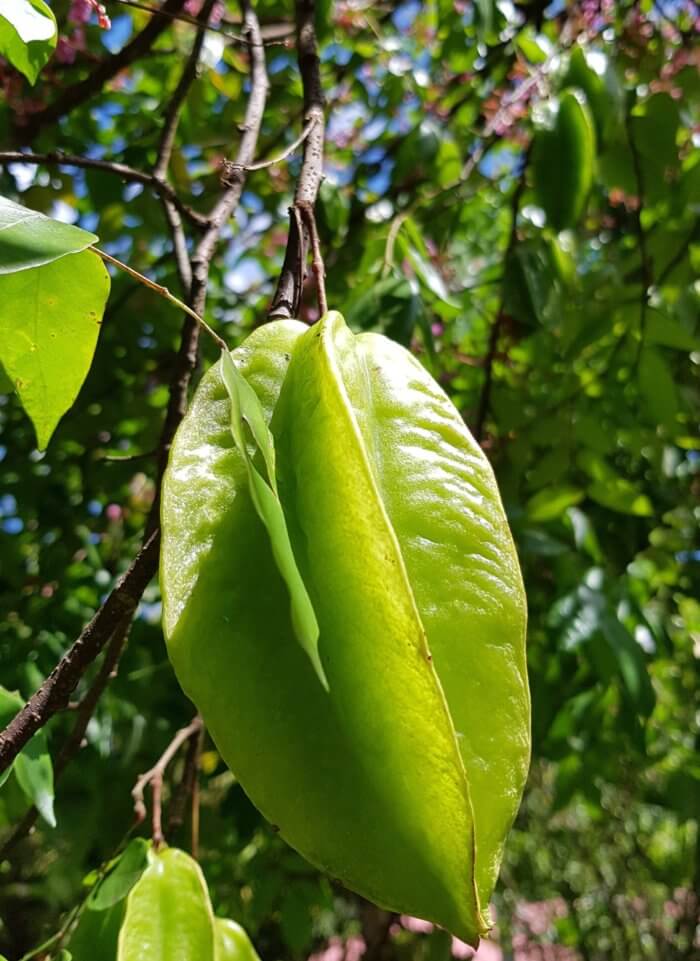
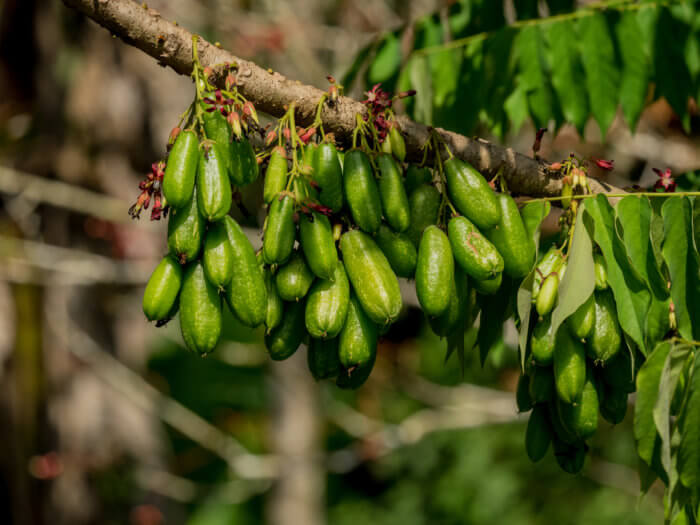
Bilimbi, the starfruit relative
We have a cousin to the purple mangosteen called the button mangosteen, Garcinia prainiana. Smaller, it has a bright tangerine/citrus flavor. It’s secret: it’s thin skinned. In humans that’s not such a great quality, but with mangosteens it’s a real plus.
And speaking of thin skins, let’s not forget the Calamandin lime, also known as calamansi or Philippine lime. Such a lovely little tree, beautiful in form, and able to produce endless quantities of small limes that we eat raw or put in smoothies and drinks. It’s secret: eat the skin! The pulp is sour, but the skin contains the citrusy sweetness that’s in perfect balance to the sour notes.
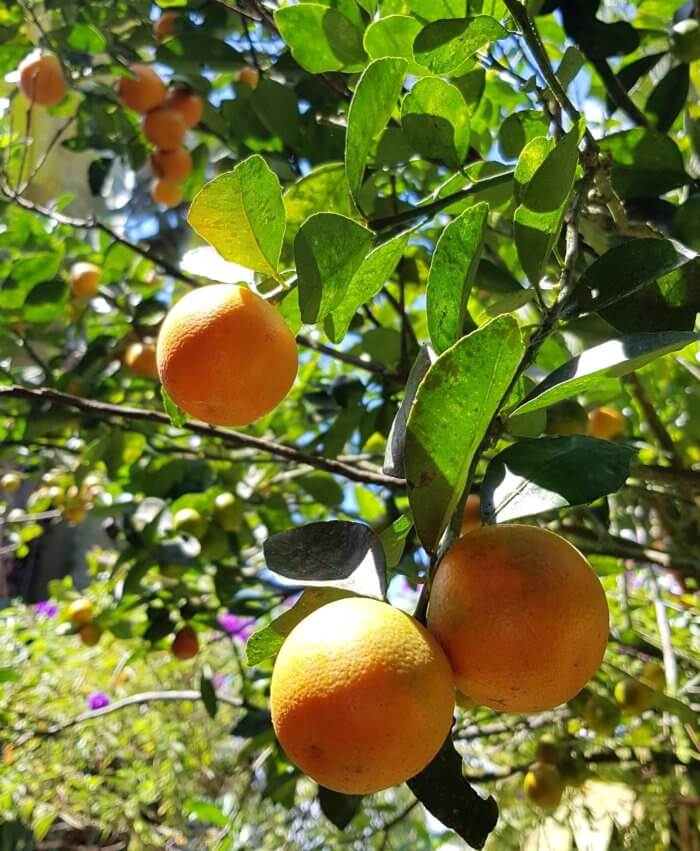
We started out as a ginger and turmeric farm, and there’s another member of the ginger family that grows nicely at the farm. You’ve cooked with it, enjoyed it as a spice, but never knew it was a ginger and had the sweetest little white, yellow, and purple flowers near the ground. It’s name? Cardamom! It’s producing cardamom seeds now, and it’s secret is that many people think it’s a powerful aphrodisiac. And a spice supporting normal blood pressure, a healthy inflammation response, and many other health benefits.
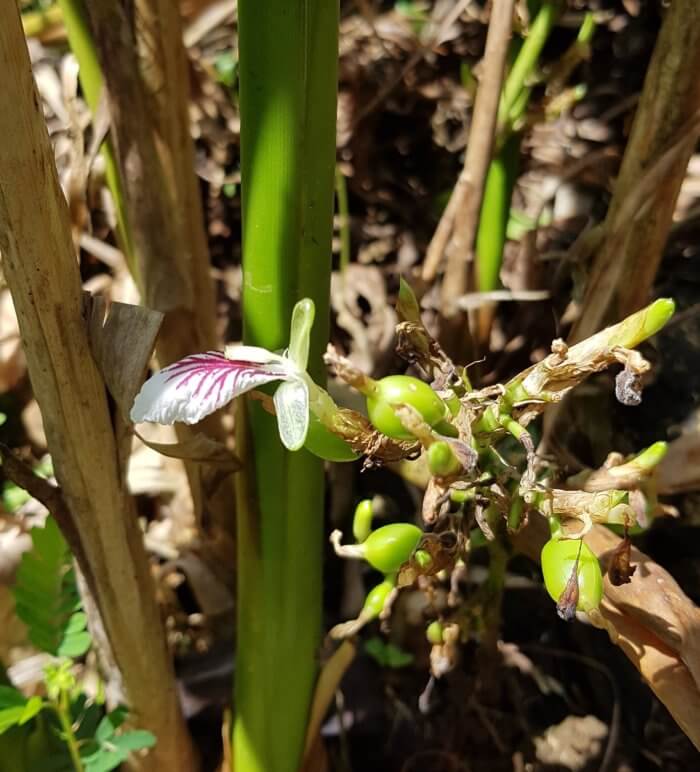
We’ll end with two that share a highly desirable flavor profile: guaba and biribá. Guaba is also known as the ice-cream bean, and everyone enjoys breaking open the long seed pod and eating the soft, sweet, cottony flesh around the seeds. The plant’s secret is that it tastes a little bit like vanilla, so the ice cream bean is Nature’s way of giving you cotton-candy vanilla ice cream on a warm day in the tropics. But then there’s biribá (pronounced bid-ee-BAH), my personal favorite. Biribá is known scientifically as Rollinia deliciosa, and it deserves the formal recognition as being delicious to its core. From the outside, though, this member of the annona family is off putting – it’s a slightly irregular and spiky sphere that doesn’t hint at the “wild sugar apple” custard that awaits you. If you’re patient, and harvest only when the green spiky exterior turns a roasted lemon yellow, follow my lead and put the ripe biribá into the refrigerator and wait for the next meal. Then take out your spoon and dive in to the creamiest custard you’ve ever imagined. You’ll never forget your first chilled biribá! It’s secret: it’s so rich that it takes three or four people to eat one piece of fruit.

We should all be reaching for a biribá!
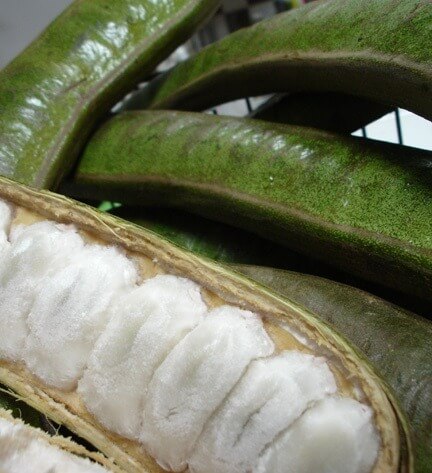
The ice-cream bean
And those are just some of the fruits around the farm in August. There’re always multiple varieties of coconuts, cacaos, bananas, peppers, papayas, mangoes, Colombian zapotes, lubi lubis, arazás, and more to be found in our regenerative garden of tropical delights. And in our restaurant!
Pura Vida


